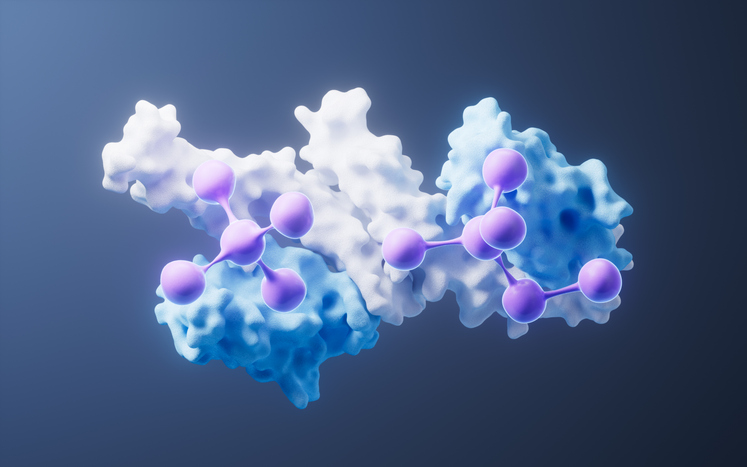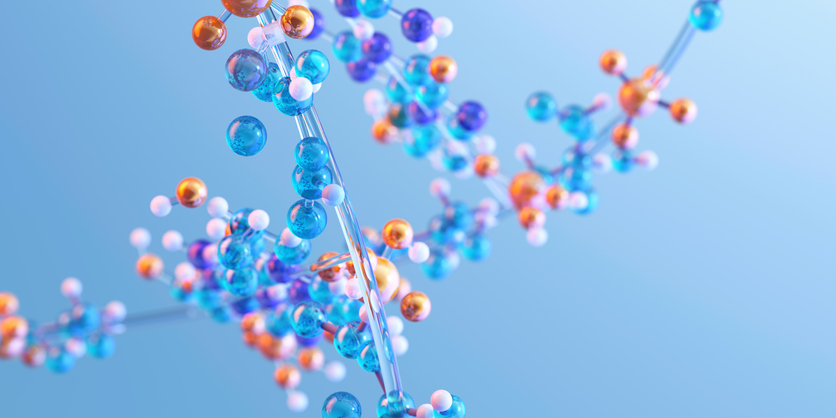
Peptides have surged to prominence in modern biotechnology thanks to their unique structural features and vast functional potential. These short chains of amino acids often serve as the backbone for advanced therapies, diagnostic tools, and novel research methods. Although smaller than full-blown proteins, peptides can exhibit remarkable specificity and versatility, making them indispensable in fields ranging from drug discovery to molecular biology.
At Adesis, we’ve assisted a wide array of teams and organizations as they work through the nuances of peptide science. We will provide a comprehensive introduction to peptides, covering what they are, how they operate within biological systems, and why they’ve become vital resources for researchers and developers alike. We’ll also shine a spotlight on their therapeutic pipeline, the challenges they face, and the broader horizons they open up before ending with details on how our services can help propel your projects forward.
Understanding the Advantages of Peptides in Layman’s Terms
At the most fundamental level, peptides are short polymers formed by the linkage of amino acids via peptide bonds. One of the defining advantages of peptides lies in their adaptable size. Because they’re shorter than most proteins, they can often be synthesized and modified more easily, either through chemical methods like solid-phase peptide synthesis (SPPS) or through recombinant expression in engineered cells. This adaptability renders peptides appealing both as research tools and as therapeutic candidates. At the same time, peptides can exhibit substantial functional diversity, acting as hormones, neurotransmitters, antimicrobial agents, and more.
Amino Acids as Building Blocks
Every peptide begins with amino acids, which themselves consist of a central carbon bound to an amino group (–NH2), a carboxyl group (–COOH), a hydrogen atom, and a distinctive side chain (R group). It’s the side chain that imparts each amino acid with unique chemical properties. Some are hydrophobic, others are charged, and still others can form disulfide bonds. When amino acids link up, their adjacent –COOH and –NH2 groups form a peptide bond, releasing water. Consequently, a peptide’s sequence (known as its primary structure) is crucial for determining its overall function.
A subtle shift in even one amino acid can mean the difference between a biologically active peptide and an inactive one. For instance, swapping an alanine for a lysine might transform a nonpolar region into a positively charged segment, altering how the peptide folds or binds to its target. Because of this sensitivity, peptide design often involves trial and error, as well as computational modeling, making robust synthetic strategies and analytical methods essential for verifying a peptide’s final structure.
Quick Comparison with Proteins
What is the relationship between amino acids, peptides, and proteins? Key points to keep in mind include:
- Size Matters: Peptides typically measure fewer than 50 amino acids, while proteins can consist of hundreds or thousands.
- Functional Specificity: Peptides often fulfill more targeted roles, such as receptor binding or signaling. Proteins, with more extensive folding and multiple domains, can carry out broader and more complex operations.
- Manufacturing Complexity: Smaller peptides can often be produced more quickly and cost-effectively, whereas full-length proteins frequently require cell-based expression systems and more stringent purification processes.
Because there is a direct relationship between peptides and proteins, it is crucial to know how they can impact the role a biological structure might play in a bodily process.
Roles in Biological Systems
Beyond their chemical allure, peptides wield crucial influence over countless physiological processes. They can be synthesized within cells as fragments of longer proteins or as standalone molecules. Once produced, peptides may act locally or travel throughout an organism, coordinating activities ranging from metabolism to immune responses.
Coordination of Physiological Functions
Peptide hormones, such as insulin and glucagon, regulate processes like glucose uptake and release, ensuring that cells receive a stable supply of energy. Meanwhile, peptides in the nervous system, called neuropeptides, help transmit signals between neurons, affecting mood, pain perception, and memory formation. The potent regulatory power of these short chains underscores why they’ve garnered so much attention in the realms of endocrinology and neurology.
Increasing Importance in Personalized Medicine
Recent advances in genomics and proteomics have bolstered the movement toward personalized medicine, where treatments are tailored to an individual’s genetic or molecular profile. Peptides fit neatly into this paradigm because researchers can program them to bind specific molecular targets, potentially creating custom therapies with fewer off-target effects. For example, a peptide designed for a unique cancer mutation might deliver a cytotoxic agent precisely where it’s needed, sparing healthy tissues.
The Development Pipeline for Peptide Therapeutics
Translating a peptide concept into a market-ready therapeutic involves multiple stages, each demanding meticulous planning and expertise. Although broadly similar to traditional drug development pathways, peptide-based projects do present specialized challenges, like stability and regulatory documentation.
Preclinical Research and Feasibility
During the earliest stages, researchers often start by screening large libraries of peptides. High-throughput synthesis methods and computational modeling can expedite the discovery of peptides that bind specific targets or exhibit desired biological functions. Once a promising candidate emerges, the peptide is evaluated in vitro (e.g., cell-based assays) and then in vivo (often in animal models) to gauge factors like toxicity, half-life, and target engagement.
Even at this preclinical phase, structures can pose a critical hurdle. Peptides, due to their susceptibility to proteolytic enzymes, may degrade rapidly if administered orally. To address this, scientists experiment with different delivery strategies, such as injection, transdermal patches, or intranasal sprays, or incorporate chemical modifications that render the peptide more resistant to enzymatic cleavage.
Clinical Evaluation and Regulatory Approval
Following successful preclinical tests, a peptide-based therapy can enter clinical trials, generally divided into three phases. They include:
- Phase I Trials: Conducted with a small group of healthy volunteers or patients to assess basic safety, tolerability, and dosage.
- Phase II Trials: Involves a larger cohort of patients to evaluate efficacy, optimal dosing, and potential side effects.
- Phase III Trials: Represents large-scale testing across broader populations, comparing the new therapy’s outcomes against existing standards of care. Data from this phase become pivotal for regulatory submissions.
For peptides, organizations like the U.S. Food and Drug Administration (FDA) or the European Medicines Agency (EMA) may request comprehensive documentation detailing the peptide’s synthesis, characterization, and preclinical/clinical data. While this regulatory journey can be lengthy, it ensures the product’s safety and efficacy, bolstering confidence in the final therapeutic if it receives approval.
Key Applications and Future Directions
Peptides continue to break new ground in both traditional and unexpected domains. Whether it’s engineering peptides that target unique disease biomarkers or leveraging them in everyday products, the future for these biomolecules looks incredibly promising.
Hybrid Molecules and Drug Conjugates
One compelling trend involves fusing peptides with other entities to expand functionality. By coupling peptides with small-molecule drugs, antibodies, or nanoparticles, researchers can design “combination constructs” that address multiple therapeutic needs at once. For instance, a peptide might home in on a specific tumor antigen, delivering a toxin-laden nanoparticle directly to cancer cells while largely bypassing healthy tissues.
Peptide–drug conjugates are already in development for various cancers, aiming to capitalize on the selectivity peptides offer. Should these constructs continue to show effectiveness and safety, they could revolutionize how we approach diseases that have eluded conventional treatments.
Innovations on the Horizon
There are a few notable innovations on the horizon involving peptides. They include:
- Computational Peptide Design: Improved algorithms and molecular modeling tools speed up sequence design, letting scientists predict how a given peptide will fold or bind to its target with increasing accuracy.
- DNA-Encoded Libraries: Researchers can link peptides to specific DNA tags, enabling ultra-high-throughput screening of vast peptide libraries in a single assay.
- Cell-Penetrating Peptides: By cleverly modifying peptide sequences, scientists hope to surmount challenges of intracellular delivery, opening up possibilities for delivering drugs or genetic material inside cells.
For researchers to remain on the cutting edge of peptide application, it is crucial to keep a few best practices in mind.
Practical Considerations: Balancing Potential and Challenges
Before racing into peptide-based research, stakeholders should remember that the field, while brimming with opportunity, does come with inherent difficulties. Peptides can degrade quickly in biological environments, and they often require advanced purification methods for consistent quality. Furthermore, the cost of raw materials, like protected amino acids, can accumulate, especially for large-scale projects. Addressing these concerns early on can set a solid foundation for success.
A few best practices to follow include:
- Stability and Storage: Many peptides degrade at room temperature or in aqueous solutions, necessitating specialized storage conditions (e.g., lyophilized forms).
- Analytical Validation: Techniques like high-performance liquid chromatography (HPLC), mass spectrometry (MS), and nuclear magnetic resonance (NMR) spectroscopy are indispensable for verifying peptide identity and purity.
- Scalability: Transitioning from small-scale lab batches to kilogram-scale manufacturing requires refined processes, robust supply chains, and compliance with industry best practices.
It is also critical to rely on experts who have experience in this field. That is where our team can serve as your guide.
Rely on Adesis for Cutting-Edge Peptide Solutions
Understanding the fundamentals of peptide science is the first step in harnessing these versatile molecules for breakthrough discoveries. However, turning theories into practical results often calls for specialized expertise and a flexible, well-resourced partnership.
At Adesis, we work with researchers and developers at every stage of peptide innovation. If you’re exploring novel peptide-drug conjugates, our facilities and team stand ready to accelerate your journey. Reach out today to learn how we can tailor our capabilities to meet your unique objectives in peptide research and development.


